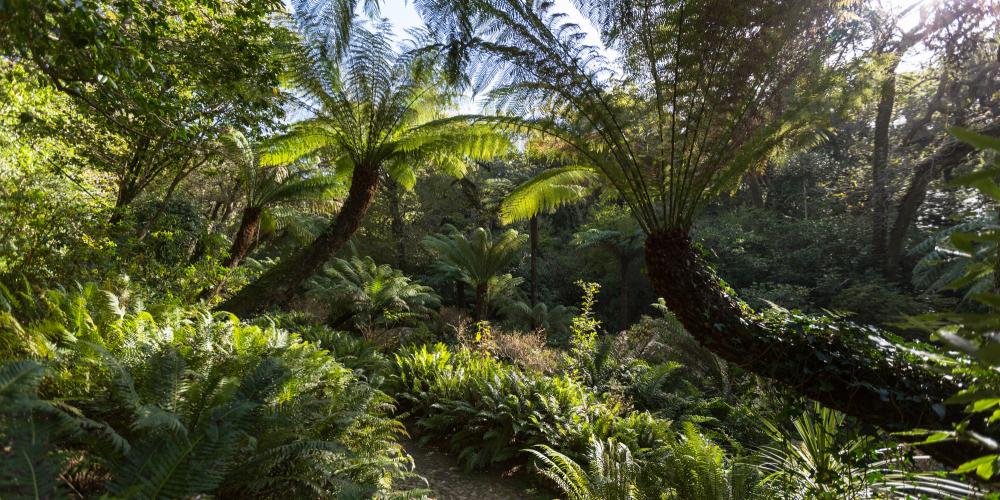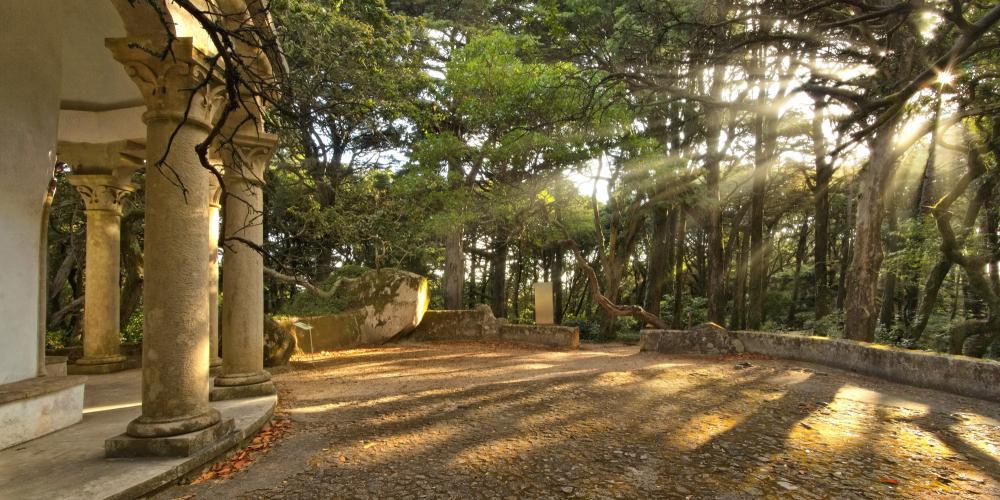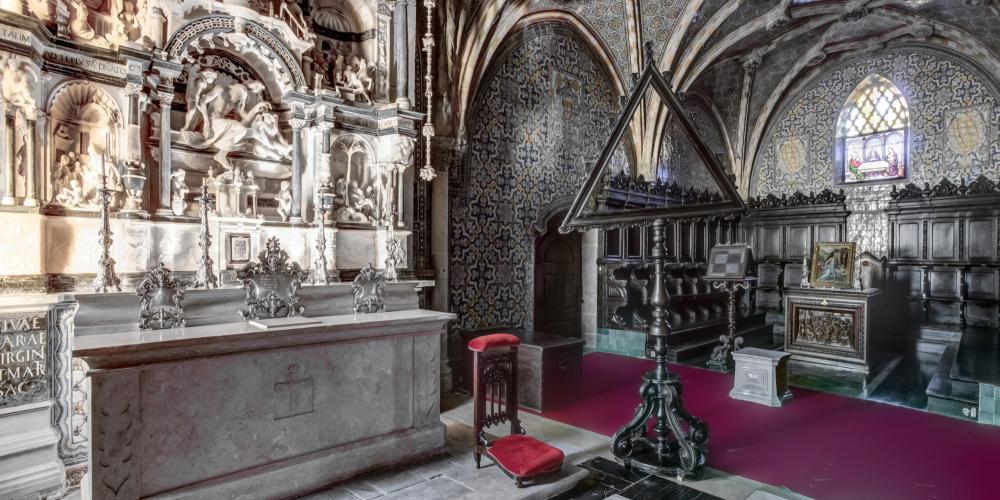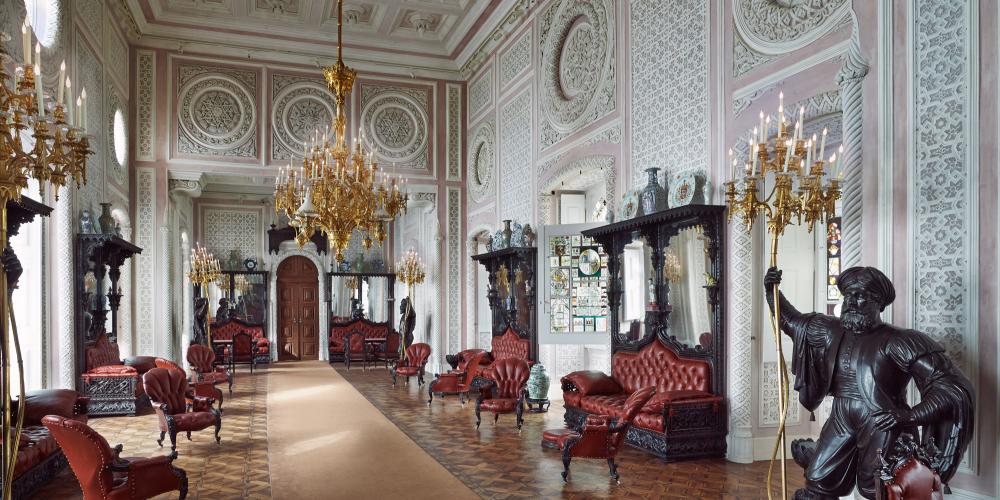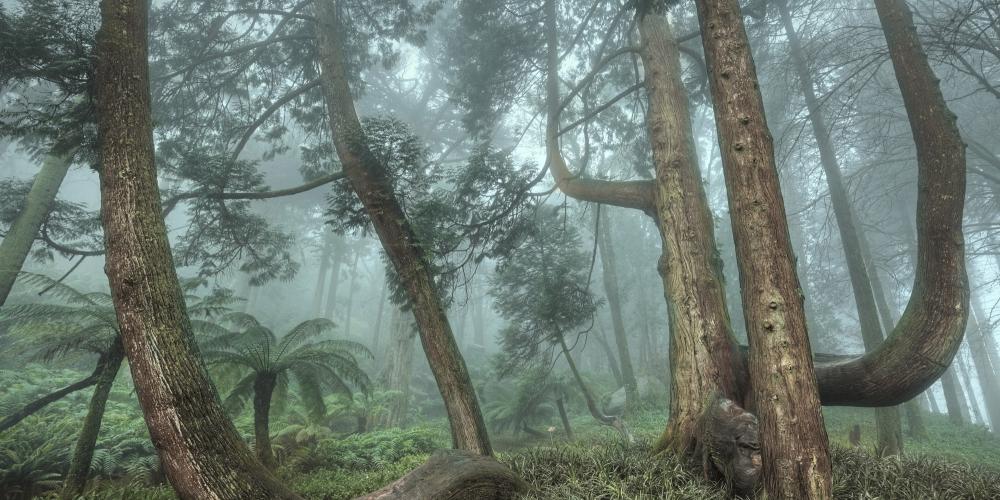Park and National Palace of Pena

The construction of the Palace began in 1839 around the ruins of an old hieronymite monastery erected in the sixteenth century by King Manuel I and acquired by Ferdinand II. It incorporates architectural references of Manueline and Moorish influence which give rise to a surprising “One Thousand and One Nights” effect. Around the Palace, using species from all over the world, the king planted the Park of Pena (85 hectares), which is the most important arboretum in Portugal today.
After visiting Pena, composer Richard Strauss wrote: “Today is the happiest day of my life. It’s the most beautiful thing I’ve seen. This is the true Garden of Klingsor – and there, up on high, is the Castle of the Holy Grail.”
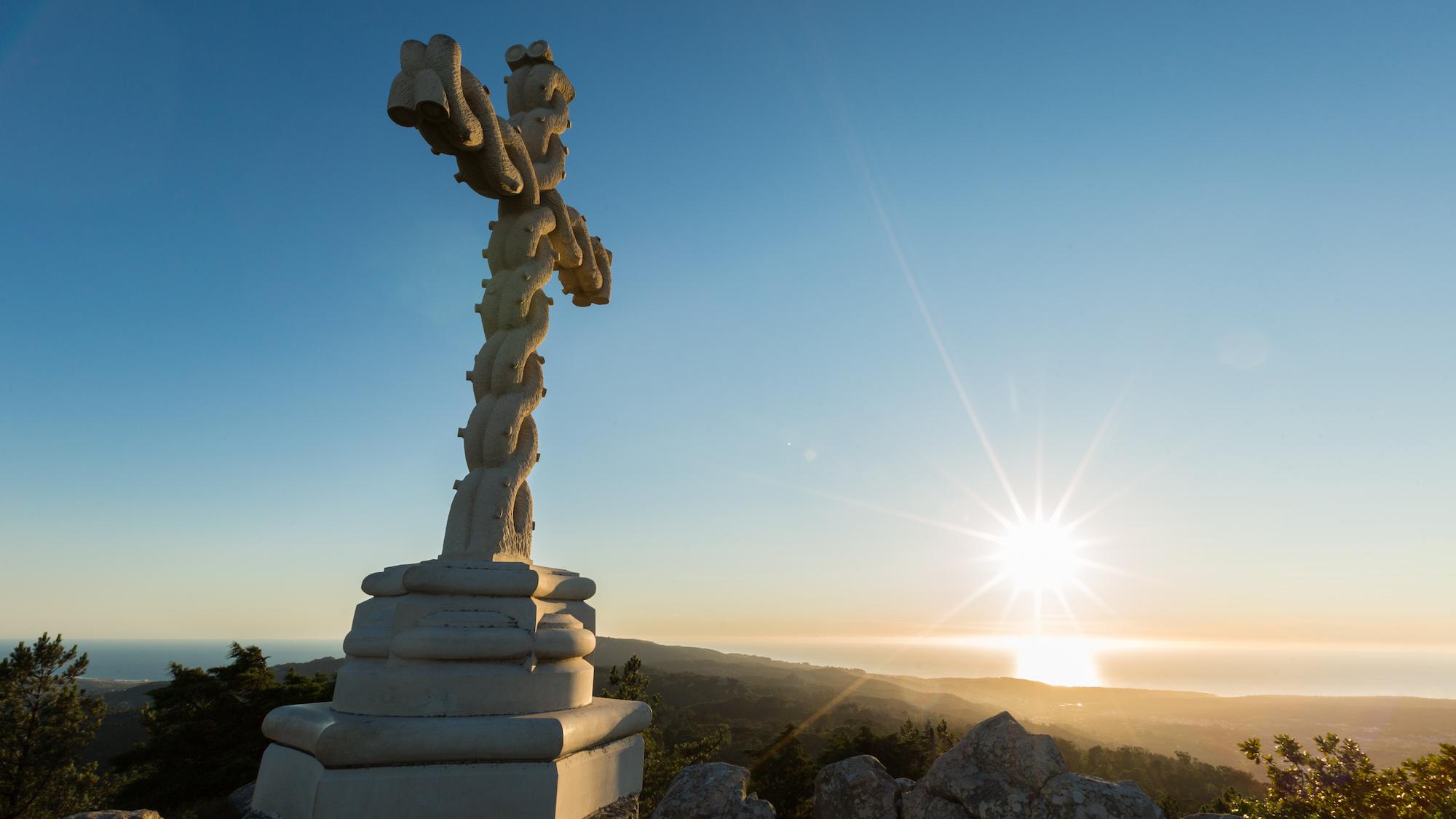
The sixteenth-century monastery acquired by Ferdinand II held a great fascination for the king, a result of his Germanic education and the romantic imagination of the period, which were captivated by the hill and the aesthetic enhancement of the ruins. The initial project was merely to restore the building to serve as a summer residence for the royal family, but his enthusiasm led him to decide to build a Palace to extend the monastery.
In the park, the expression of the romantic aesthetic combined with the search for exoticism in the impetuosity of nature led the king to design winding paths that lead the visitor to discover places of note or outstanding viewpoints: the High Cross, the Temple of Columns, St Catherine’s Height, the Monk’s Grotto, the Little Birds Fountain, the Queen’s Fern Valley and the Valley of Lakes. Along these paths, with his collector’s zeal, he planted forest species native from every continent. Especially worthy of note are the collections of Asian camellias, which were introduced in the 1840’s in the Park of Pena by King Ferdinand II and that have since then become the very landmark of Sintra’s winter season, serving as the motif for balls and festivals.
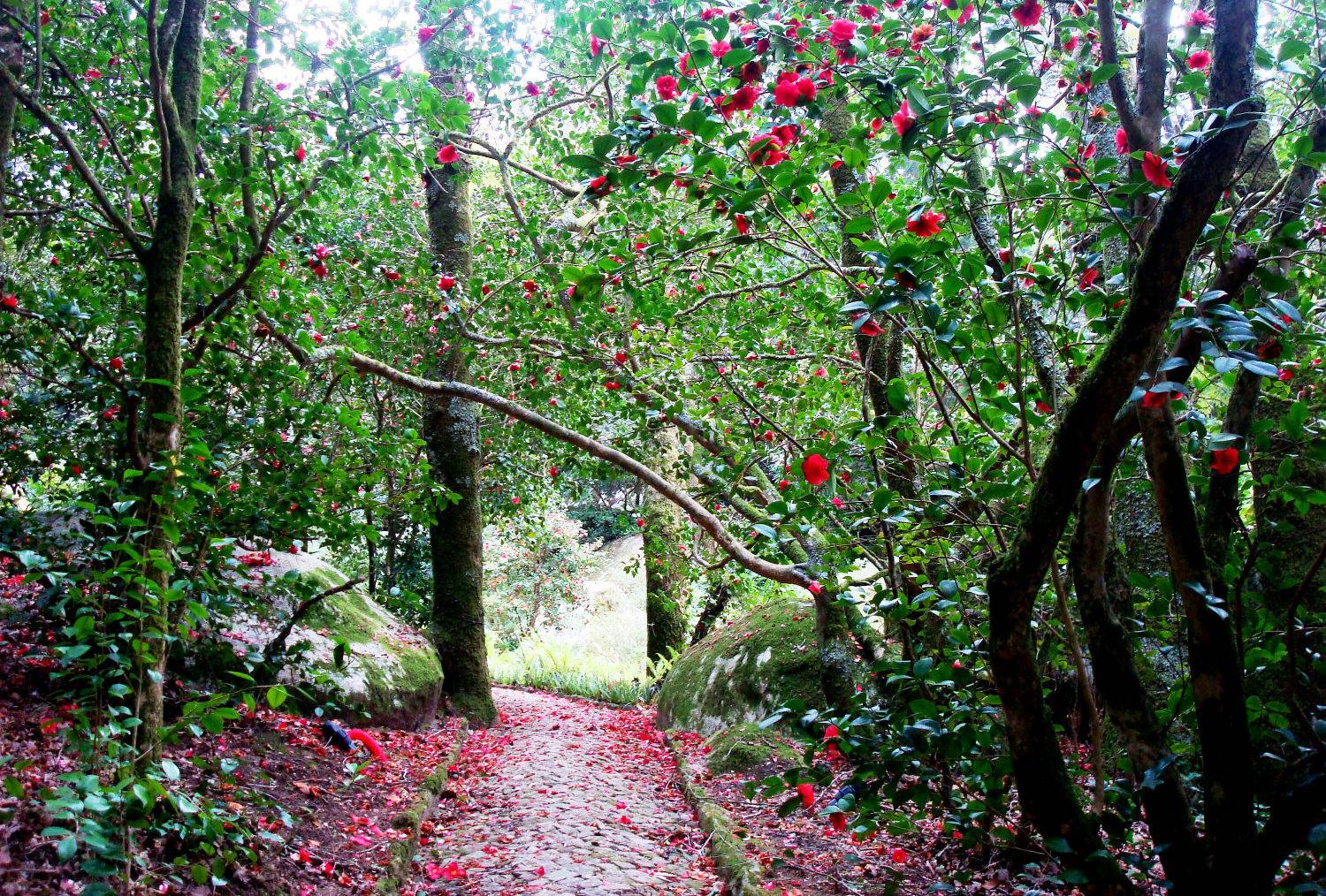
The most significant collection is the Garden of Camellias, planted by the French gardener Bonnard, which features, besides the international cultivars, Portuguese cultivars named in homage to every member of the royal family of the time. The exotic arboretum frames pavilions and small buildings, creating a scene of unmatchable natural beauty and also of great historical and cultural relevance.
Open all year, it is possible to enjoy this rich natural heritage along free or guided routes, in an unforgettable experience.
Park and National Palace of Pena
Open every day of the year, except December 25th and January 1st.
Park:
10:00 – 18:00, last ticket and last admission 17:00
Palace:
10:00 – 18:00, last ticket 17:00, last admission 17:30
Palace and park:
Ticket for adults (18 – 64 yrs): € 11,50
Ticket for youths (6 – 17 yrs): € 9
Ticket for seniors (over 65 yrs): € 9
Family ticket (2 adults + 2 youths): € 39
Park:
Ticket for adults (18 – 64 yrs): € 7,50
Ticket for youths (6 – 17 yrs): € 6
Ticket for seniors (over 65 yrs): € 6
Family ticket (2 adults + 2 youths): € 26
Supplement: Chalet and Garden of the Countess of Edla + 1€
To benefit from a reduction on your visit to several sites, you can buy combined tickets for several sites.
